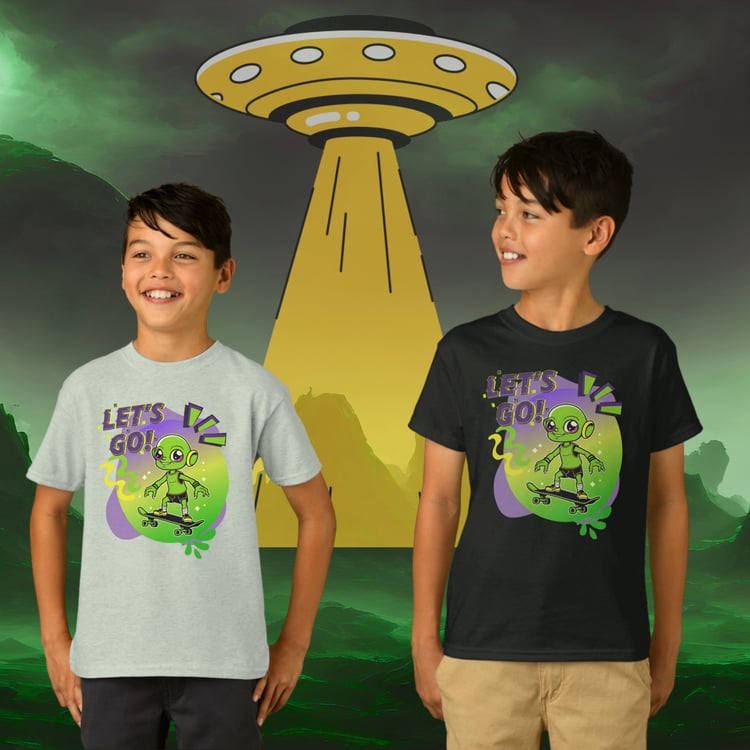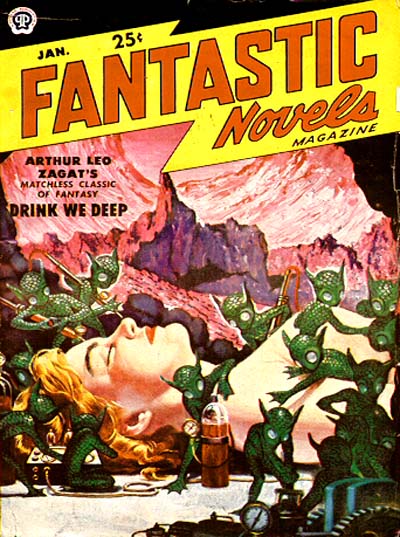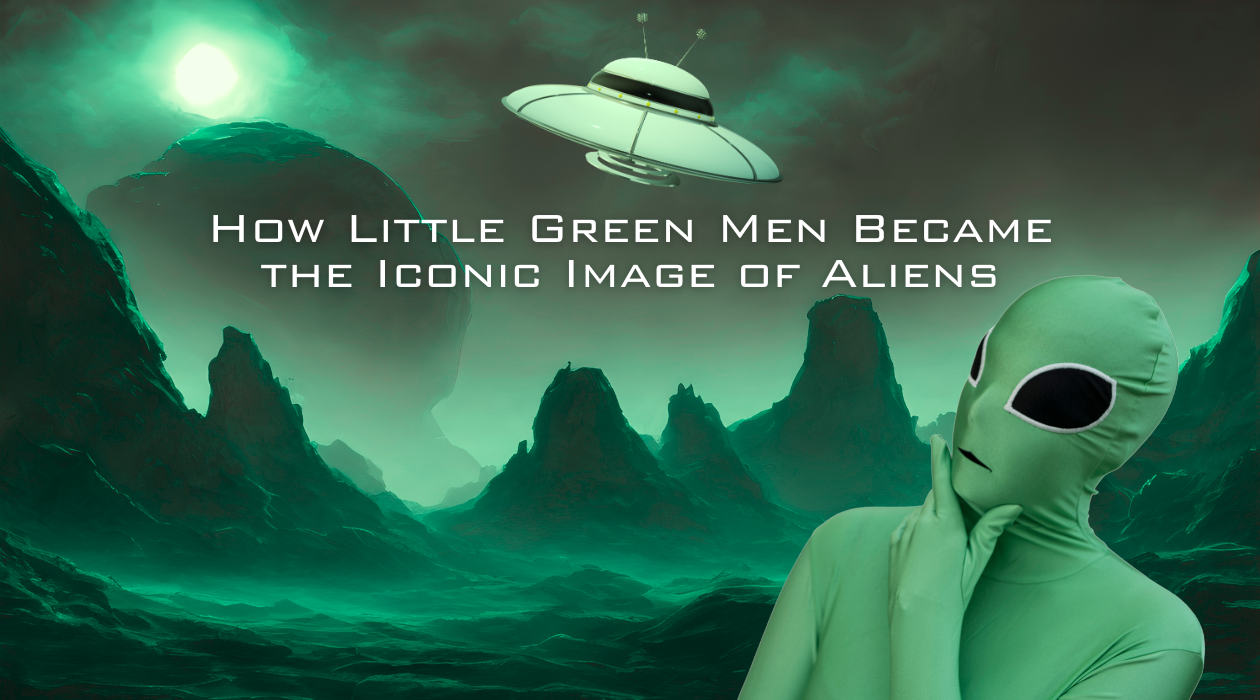Well I'm not sure what time of the year you are supposed to celebrate aliens or extra-terrestrials, spaceships or UFOs. But I thought I would have a bit of fun designing an alien on a skateboard t-shirt. But what does an alien look like? How should I portray one? I settled on the stereotypical image of a little green man.
Then I had a go at making a little animated promo video (the image below is a snapshot from the video). I do enjoy video editing. And it's fun to work with different topics that allow for more scope to play around with elements and ideas. Aliens on skateboards being one of these! (These shirts are for sale on my Zazzle store)
Video is on Facebook and Pinterest. 
I have never seen a UFO, but it is pretty awe-inspiring to watch meteor showers (which I have seen) and look up into space, realising that you are looking at history - a snapshot of what is in space a long time ago.
I couldn't help but wonder who came up with the original alien image that has become the stereotypical alien in green, with a bald head, and huge eyes? Have you ever wondered why aliens are often depicted as little green men in popular culture? The image of these extraterrestrial beings with their green skin, large black eyes, and antenna-like appendages has become synonymous with the idea of aliens. But how did this stereotype come about?
Looking at Wikipedia, it seems to have developed over time. Here's one depiction below:

Believe it or not, the origin of the little green men dates back to the early 20th century. In the 1950s, sci-fi movies and comic books popularized this image, and it stuck ever since. Interestingly, the colour green was chosen because it was thought to be otherworldly and not commonly found in human skin tones. As for their diminutive size, it's said to reflect humanity's fears of the unknown and the idea of beings more advanced than us.
The magazine image above is of extraterrestrials in Arthur Leo Zagat's novel "Drink We Deep" depicted as little green men on the cover of the January 1951 issue of Fantastic Novels. I certainly wouldn't have read or seen this novel, but I did watch the Flintstones as a child and recall an extraterrestrial character in that but a lot cuter.
But apparently the 1960s marked a transition in the way people imagined a stereotypical alien, so when I read Arthur C Clarke's novels as an older child, I don't think I had too many preconceived notions of what an alien might be like.
But I have definitely fallen prey to the stereotype now of little green men, which are most commonly used to ridicule the notion that aliens may exist. Still, just like any science fiction fan (which I am), I love depictions of aliens in all shapes and sizes. Give me a good sci-fi movie, and I will be happy for weeks mulling over the scenes!
Despite its widespread popularity, the little green men stereotype is just that - a stereotype. In reality, the universe is vast and diverse, and the possibilities of what extraterrestrial life may look like are endless. So, the next time you imagine aliens, remember that they might not actually be little, green, or even humanoid. Let your imagination run wild and consider the infinite possibilities that the cosmos holds.



Comments ()